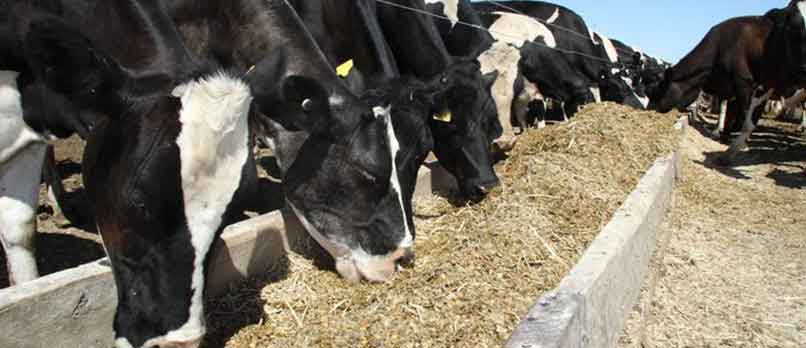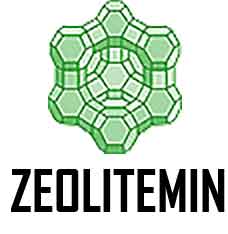
Farms Application of UZ-MIN Zeolite Animal Feeds (Clinoptilolites)
Background
Increasing consumer demand for healthier food products has led to the development of governmental policies regarding health claims in many developed countries. In this context, contamination of poultry by food-borne pathogens is considered one of the major problems facing the progress of the poultry industry in the World.
Inorganic heavy metal contaminants in animal feed pose a hazard to animal health and human food safety. Heavy metals including copper (Cu), cadmium (Cd), chromium (Cr), and lead(Pb) are potential bio-accumulative toxicants that may cause severe health problems even at low concentrations. Furthermore, non-essential elements such as Cd and Pb may also be present in animal feed as the result of feed processing and environmental pollution. The United States and Europe reported element concentrations in feed. Among the few studies that document the level of heavy metal contamination of feedstuffs in the US, reported that more than half of the Wisconsin dairy farms used feed rations containing Cu and Zn above the recommended levels and Cd was generally present in those feeds. Heavy metal contaminants in animals are identified in the Codex hazard prioritization document.
The researchers investigated zeolite and clinoptilolite properties and structure that influence metal retention and pH. Effects of conditioning NaCl, KCl, and HCl on the efficiency of natural clinoptilolite removal of Cu2, CO2, and CO (Cu) in synthetic solutions. The effects of zeolite on broiler feed additives, overall flora, meat structure, and production of omega-3 polyunsaturated fatty acids. To support these findings, The researchers confirm that natural clinoptilolites adsorb bacteria and bind to certain toxins. They recommend these natural and modified clinoptilolites as feeding additives under broiler chickens to improve gut health.
Benefits of Zeolite feed additive in animal feed
Zeolite feed additive was added to chicken feed at concentrations of 0.5% or 1% and was evaluated for its effectiveness to reduce total flora in chickens and its effects on the performance of the production. The broilers were given free and continuous access to a nutritionally non-limiting diet (in meal form)that was either a basal diet or a “Zeolite (Clinoptilolites) diet” (the basal diet supplemented with clinoptilolite at a level of 0,5% or 1%). It was found that adding zeolite to the broiler diet significantly (p <0.05) reduced total flora levels, as compared to the control, on the chicken body. Besides, it was found that zeolite treatment had a positive effect on performance production and organoleptic parameters that were measured and mainly on the increased level of Omega 3 fatty acid.
To support these findings, The researchers confirm that natural zeolite (clinoptilolites) adsorb bacteria and bind to certain toxins. They recommend these natural and modified clinic solutes as feeding additives under broiler chickens to improve gut health. In acidic solutions, the structure of the zeolite is destroyed by the release of aluminum ions (AL), which are part of its structure. Greater release of AL impairs the absorption of calcium and phosphorus. In the same study, a linear reduction in phosphorus retention was observed. With a pore size of about 2 nm, zeolites are small enough to penetrate large pesticide molecules, even if they are up to 20 A. Cationic molecules smaller than 20 A were charged into the zeolite during the ion exchange process.
Result
Zeolites were tested as an inorganic additive using 0.2% zeolite diets in broiler chicken. Zeolite research in the poultry industry focuses on performance, ambiance, and pollution reduction through zeolite feed additives and waste excretion. It shows the average growth of broiler chickens at the end of the experiment by treatment group. The average growth rate of different broiler chickens in different groups of broiler chickens fed zeolite grew faster compared to the control group. In fact, the administration of UZ-MIN zeolite feed-clinoptilolite (a commercial additive) mixture to the chickens in the trial group is reflected in the performance indicators. On the 37th day of the three experimental rounds, no such difference was apparent.
Conclusion
Clinoptilolite is a natural zeolite consisting of microporous arrangements of silica, alumina, and tetrahedrons. It has the complex formula Na (K) Ca (2,3,3) Al (3,4,5) Al, Si (2) Si (1,3) O 3,6 + -1,2 H 2 O. It forms white, green, or reddish tabular monoclinic tectosilicate crystals with Mohs hardness 3.5-4 and specific gravity 2.1-2.2.
This study showed the significance of using zeolite, as a feed additive for broilers, as part of a comprehensive program to control total flora at the broiler farm and to increase the level of Omega 3 fatty acid on the chicken body.
Zeolite (clinoptilolites) are useful feed additives for ruminants due to their high affinity to essential species. The Department of Agriculture has certified the mining process and products as approved for organic production. Various clinoptilolite materials are used for medical applications. These materials contain different amounts of clinoptilolite and have different compositions
Reference
- Where to buy bulk zeolite sand from?
- Uses and Benefits of Zeolite Minerals
- Development of zeolites in the field of human body
- What is the Best Zeolite?
- How does zeolite compare in animal feed mixes?
- How to use natural zeolite in livestock?
- Clay minerals – Zeolite Rock from Nature World
- Nature Zeolite for Plant
- Strong Zeolite Absorbent Improves LNG and LPG Production by CO2
- Zeolites offer additional advantages as turf fills
- What are Zeolite Antimicrobials?
- Discovery: New Function of Zeolite – Drug-Removing Properties
- Zeolite Mineral-Thanks for the Gift from Earth
- Uses and Benefits of Zeolite Minerals
- Feed grade zeolite powder in Animal Husbandry
- Application of Clinoptilolite Zeolite Powder in Shrimp Fish Farm
